Excerpts from Jim Conrad's
Naturalist Newsletter
Entry dated January 13, 2024, issued from near Tequisquiapan; elevation about 1,900m, (6200 ft), ~N20.57°, ~W99.89°; Querétaro state, MÉXICO
CENCHRUS PILOSUS
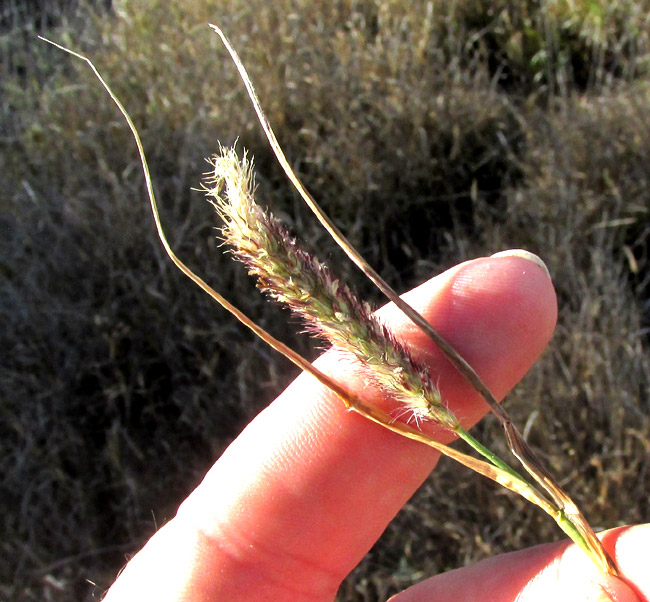
During a continuing two-year drought classified by the North American Drought Monitor as a D3 Extreme Drought, in thin soil on the partially vegetated slope of a deep erosional gully cut into compacted volcanic ash, or tuff, a clumpgrass had managed to root and produce numerous inflorescences like the above. This was definitely a drought-hardy grass doing its job of protecting what soil it could where other species couldn't.
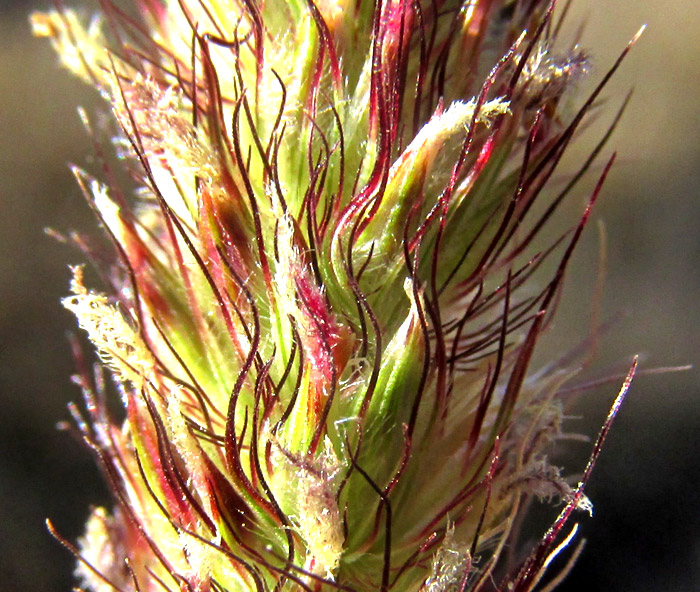
Up close, spikelets were so crowded amid many long bristles that it was hard to see their structure.
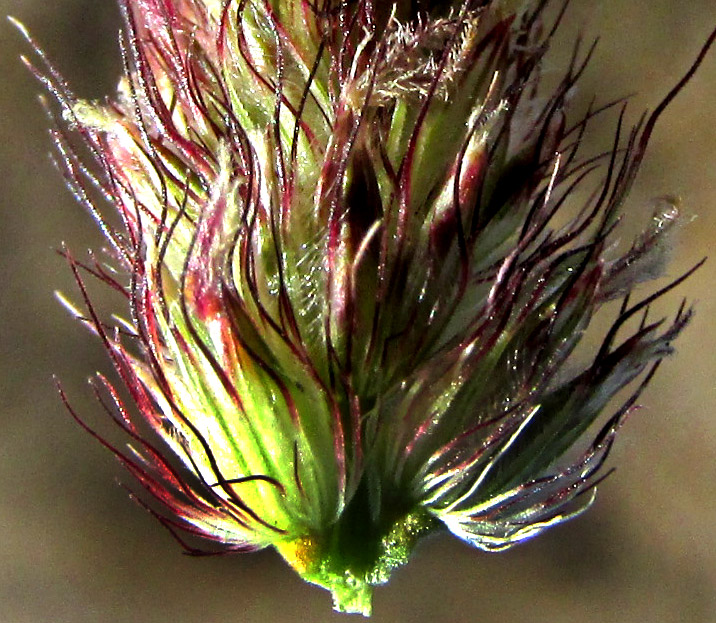
Above, a flowering head has been broken apart, revealing that the bristles arise at the spikelets' bases, not from within the spikelets. For identification purposes, it's important to notice that the bristles are mostly round in cross-section, but some flatten at their bases. They're of very different lengths and, though it's hard to see in the photo, they are disposed in three overlapping series, with the middle series producing the longest bristles. It's also hard to determine how many florets an individual spikelet produces. The literature says there are two, of which one is sterile or develops only stamens.
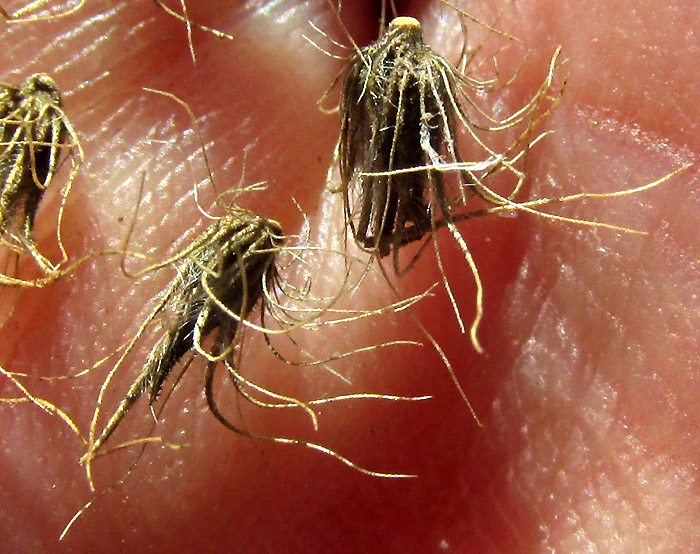
Above, mature, one-seeded, caryopsis-type fruits of a more mature inflorescence are shown. Note that the bristles fall with the fruit, instead of remaining on the rachis. Barely discernible is that tiny, sharp projections on each bristle lean toward the bristle tip, not toward the base; that feature helps with identifying to species level. On the Internet, some pictures show mature caryopses much broader than these; presumably the drought has limited our plant's fruit size.
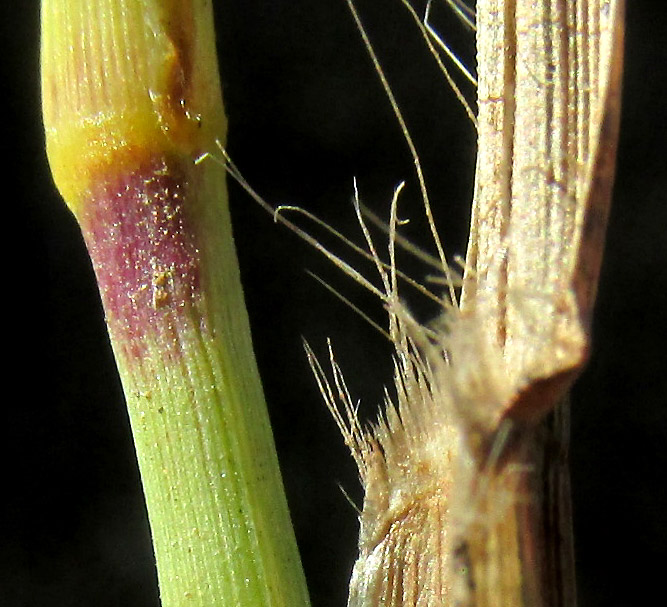
Where the leaf blade connects with the sheath encircling the stem, the ligule consisted of a collar of erect hairs of different heights, "eyebrow-like," as written in the Spanish descriptions, "pestañosa." Here's what the whole clumpgrass looked like in its profoundly abused habitat, saving what soil it could:
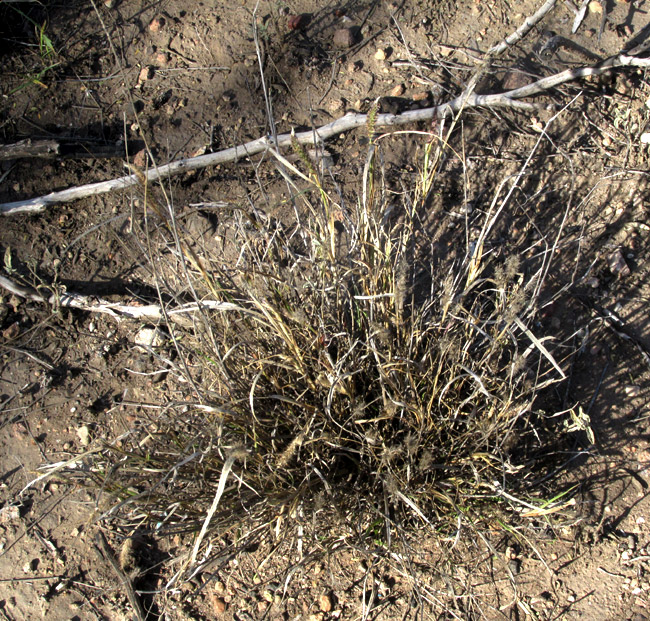
Though in the field this grass is easy to distinguish from other species, identifying it to species level using technical characters can be hard. Several vital features are difficult to see without high magnification and dissecting tools. Also, this tribe of grasses, the Paniceae, embracing such important kinds of grasses as the millets and famously weedy foxtails, hasn't been treated botanically for this part of Mexio.
However, with so many bristles subtending the spikelets, and the bristles falling with the fruits -- otherwise it might have been a foxtail, genus Setaria -- I thought we'd have either the genus Pennisetum (fountaingrasses) or Cenchrus (sandburs, buffelgrasses). When scanning pictures of Mexican species found in each genus, our plant matched images labeled as CENCHRUS PILOSUS. That species bears no English name, though since it isn't as hurtfully spiny as the sandburs, it can be thought of as one of the buffelgrasses.
Cenchrus pilosus is distributed from about here in central Mexico south into northwestern South America. It's described as inhabiting loose or rocky soils, and you can see where our plant landed. In this area abounding in centuries-abused and neglected soil, it's fairly common in certain places.
This is yet another species introduced to science by Humboldt and Bompland during their exploration of the Americas. However, their collection wasn't made here in Mexico, but in Venezuela during their visit there in 1799 and 1800.
Other than the fact that livestock can eat it, in the literature I find no human uses for the species, though there's mention of it as a weed. I think certain small, seed-eating wild species would find the caryopses to their taste, plus you've seen how heroically our plant defended its little part of the ecosystem from creeping, manmade desertification.